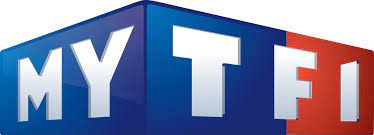
After more than 40 years of operation, DTVE is closing its doors and our website will no longer be updated daily. Thank you for all of your support.
EC and industry groups set out 5G vision
 Media and telecom industry groups are setting out their positions ahead of the European Commission’s launch of a ‘manifesto’ for the deployment of the technology in Europe and planned September unveiling of an ‘action plan’ for 5G mobile networks.
Media and telecom industry groups are setting out their positions ahead of the European Commission’s launch of a ‘manifesto’ for the deployment of the technology in Europe and planned September unveiling of an ‘action plan’ for 5G mobile networks.
The 5G manifesto identified key requirements, including substantial investments in new infrastructure, a large amount of spectrum and new capabilities, as well as a close collaboration between telecom players and others.
The manifesto said that technology trials would demonstrate new 5G capabilities ahead of the 5G 3GPP standard’s first release being available, something that is expected around 2018.
Additional frequency spectrum for 5G is expected to be identified by the WRC 219 conference while European stakeholders will agree on trial specifications covering use-cases, scenarios, interfaces, and agreement to transfer use-cases across trial networks.
Among the use cases being considered, which cover everything from connected automotive applications to energy distribution, media and entertainment uses being looked at include the integration of satellite and terrestrial network services, demonstrating the power of multicast and caching for delivering a cost-effective and scalable user experience across Europe – for example at the Glasgow-Berlin European Championships in 2018 and European football championship 2020 – and immersive video scenarios showcasing the benefits of 5G capacity enhancements, according to the document.
A white paper published by the 5G PPP highlighted the potential benefits of 5G for media and entertainment, noting potential uses cases including the distribution of ‘ultra-high fidelity media’, live-event experiences, the dissemination of user and machine-generated content, immersive media such as holographic content, cooperative media product and collaborative gaming.
The industry players are committed to delivering a roadmap of trials and demonstrators by January 2017, to achieve interoperability of networks and use-cases for the period 2018-20 and make 5G benefits known to vertical players, investors and the general public.
Spectrum requirements identified include harmonised licensing of 700MHz, 3.4-3.8GHz and higher-frequency bands for 24GHz and beyond by 2020.
European operators will target launching 5G in at least one city in each of the European Member States by 2020.
EBU president Jean-Paul Philippot, who took part in a roundtable discussion with Commissioner Günther Oettinger in Brussels yesterday, said that 5G mobile could benefit public service media but that the platform should be open and interoperable.
“We believe that 5G could offer many opportunities for public service media and their audiences. Our ambition is to enhance our relationship with EU citizens and enrich viewer experience. At the same time, we strive to improve the efficiency and agility of our production processes. With this aim in mind, the EBU is willing to contribute to the development of an open and interoperable 5G technology platform,” said Phlippot.
“Audiences should benefit from 5G with quality of service and easy universal access to content of public value without needing to pay recurrent charges (i.e. free-to-air). EU 5G policy should support the development of an open and interoperable technology platform. It should be a vehicle towards cooperative use of broadcast and broadband infrastructures. As for all distribution networks it is crucial for costs to be transparent, predictable and affordable to ensure that funds are mainly devoted to content.”
Nordic telco Telia said that it planned to show leadership in 5G, with advanced plans to launch services in Stockholm in Sweden and Tallinn in Estonia in 2018. The company recently signed a 5G MoU with Nokia.
“Telia Company will bring 5G to at least two cities in 2018, showing technology leadership; putting the best and latest technology in our customers hands is important for us. The work being carried out by the European Commission and supported by this group of companies provides an important basis for creating the right policy environment to allow 5G to flourish, as well as fostering the culture of partnership and innovation which will be a prerequisite for digitally driven growth in Europe,” said Johan Dennelind, president and CEO of Telia Company, also present at the roundtable.
Satellite operator SES also confirmed its support for the EC’s 5G plans.
“SES strongly believes in Europe’s potential to become the global leader in 5G, permitting the enablement of economic growth, sustainability and high-quality jobs. Synergy of the key stakeholders is essential for successful deployment of 5G, and satellite is a key building block for a global, profitable and inclusive 5G deployment. Thus communication satellites will play a core role in the deployment and accessibility of 5G,” said Karim Michel Sabbagh, president and CEO of SES.
“Being a founding member of the European 5G Public Private Partnership and one of the main contributors of the industry effort to define a 5G Action Plan, today we further confirm our willingness to support the coordinated deployment of this advanced connectivity infrastructure.”


